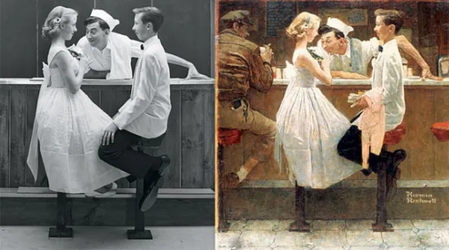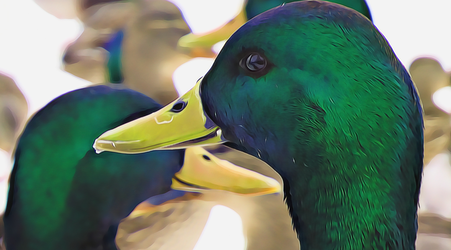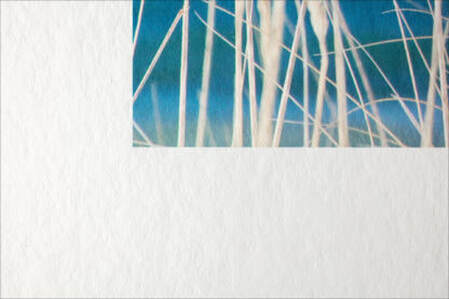Brian H. Daniel's fine art creation process
 The process of creating art (Rockwell)
The process of creating art (Rockwell)
Many painters and photographers have inspired Brian H. Daniel along the way, but most notably Norman Rockwell and Andy Warhol.
Most people do not know that Rockwell and Warhol's work often started as photography first.
Brian's work is a sort of hybrid of "photography first" (Rockwell) and a "layered approach" (Warhol).
Most people do not know that Rockwell and Warhol's work often started as photography first.
Brian's work is a sort of hybrid of "photography first" (Rockwell) and a "layered approach" (Warhol).
The beginning process
Brian spends countless hours in the field taking photographs each month. Sometimes he has a plan of what he wants to shoot, but often he will spend hours just walking around a city or driving through the countryside scouting and getting inspiration.
For every one photo that Brian selects to be printed for sale, hundreds of others were abandoned as he painstakingly went through different iterations and experimentation. That process often includes going back to locations again and again and shooting during different times of the day (or even year) to get the lighting just right.
For every one photo that Brian selects to be printed for sale, hundreds of others were abandoned as he painstakingly went through different iterations and experimentation. That process often includes going back to locations again and again and shooting during different times of the day (or even year) to get the lighting just right.
Digital fine tuning and iterations
 About 500 photos and 100 hours invested in "Duck City"
About 500 photos and 100 hours invested in "Duck City"
After a photo is chosen to be part of a release for purchase, Brian spends even more time making color corrections and fine-tuning tones.
Once that step is complete, he will go through his proprietary process of "digital layering" (i.e., compositing). This can also take many more hours of experimentation.
After the layering process is complete, it gives Brian's photos his signature look, which is a sort of hybrid between animation and digital watercolors.
Once that step is complete, he will go through his proprietary process of "digital layering" (i.e., compositing). This can also take many more hours of experimentation.
After the layering process is complete, it gives Brian's photos his signature look, which is a sort of hybrid between animation and digital watercolors.
Selecting paper: A testament to quality
 The paper has a matte finish and is slightly textured
The paper has a matte finish and is slightly textured
Brian only uses archival (acid- and lignin-free) museum-quality paper that will last generations. Absolutely no expense is spared when making prints for clients.
Specifically, he uses Hahnemuhle bamboo paper from Germany, a papermill in business since the year 1584. This choice of paper is environmentally sound, sustainable, and contains no optical brighteners.
Additionally, only "master artisans" with decades of experience oversee the reproduction process under Brian's supervision.
With these strict quality-control measures in place, only the very best fine art photography will be part of Brian's collections.
Specifically, he uses Hahnemuhle bamboo paper from Germany, a papermill in business since the year 1584. This choice of paper is environmentally sound, sustainable, and contains no optical brighteners.
Additionally, only "master artisans" with decades of experience oversee the reproduction process under Brian's supervision.
With these strict quality-control measures in place, only the very best fine art photography will be part of Brian's collections.